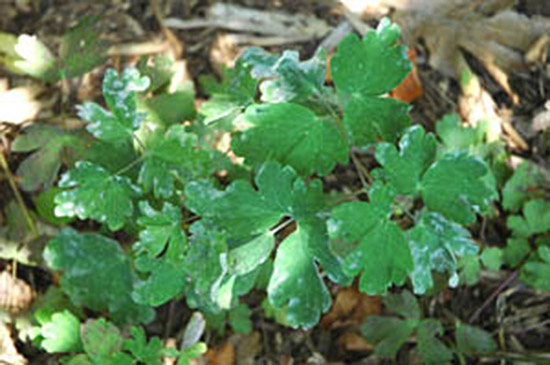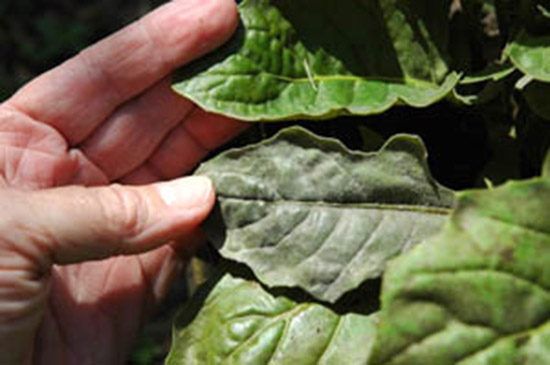Issue 14, August 17, 2015
Powdery Mildew
Usually, summer's heat has stressed many flowers by now. The great news is that's not the case this year. The bad news is all the rain has had its detrimental effects.
With all the rain, powdery mildew hasn't been as much of a problem, though it has shown up on a few of the garden flowers. Powdery mildew really prefers the hot humid days where rain fall is practically non-existent. Probably because many of the flowers have grown tall and leggy, mildew has been kept in check by air movement; when foliage is dense, mildew is more of a problem. Anything to improve air circulation will cut down on mildew. Stripping off the lower fourth of the leaves helps for phlox, zinnias, and other garden flowers. Some plants, such as lilacs (Syringa), will get powdery mildew at the drop of a hat, though it seldom affects the plant adversely other than aesthetically.
Powdery mildew is usually a "top surface" disease; you seldom find it affecting the underside of the leaves. It mainly reduces the plant's ability to photosynthesize, reducing plant growth and flowering.

Powdery Mildew.
As a superficial disease, you can wipe it off easily, though it probably will return unless you modify the environment. Black pepper-like spores can usually be seen by the naked eye or a low-power magnifying glass.

Powdery Mildew.
Several fungicides can control powdery mildew, but it is important to rotate the fungicide types so the disease doesn't become resistant to the products. Sanitation is also important; remove the debris in the fall and if possible, plant annuals in different locations next year. Resistant cultivars are on the market, particularly for zinnia and phlox. Of course, planting flowers that never seem affected such as marigolds and geraniums is another option.
If plants are severely infected, you may just want to remove the plants this late in the season, and insert some of late season ornamentals such as flowering kale, chrysanthemum or asters.
For some plants, a mid to late summer (through mid-August) pruning back may stimulate enough new growth and flowers to get you through the middle of October. Most of the annuals can be cut back by half, and then watered and fertilized. For upright plants, simply use your pruners and cut back to a bud right above a leaf. For cascading plants, such as petunias, lift the plants carefully and prune. Pruning will remove any seedpods forming which is the plant's main goal. Fertilizing, with half the recommended rate on most complete fertilizer formulations, will provide the boost to stimulate growth and then flowers. Plants may not bloom for two weeks, but after that should be compact. Some groundskeepers will use electric hedge clippers if the number of plants is too much to hand prune. It looks "interesting" for a few days until the plants start re-growing. (David Robson)
Author:
David Robson